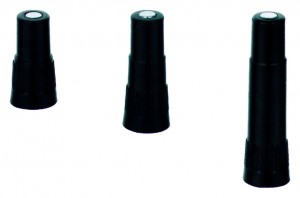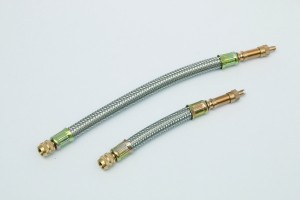Importance
Valves play a vital role in industries ranging from oil and gas to plumbing and heating systems. These small devices control the flow of liquids and gases, ensuring proper operation and safety. However, valves can sometimes be difficult to reach or operate due to their location or design. In this case, a valve extension comes into play. In this article, we will explore the importance of valve extensions, their different types, and their applications in different industries.
Valve extensions are a valuable tool that make it easy to operate and maintain valves in hard-to-reach locations. They essentially extend the valve's handle or control mechanism, allowing it to be operated and managed from a distance. Valve extensions are typically used where the valve is buried underground, behind an obstruction, or operating under high temperature, pressure, or hazardous conditions.


Type
There are various types of valve extensions on the market today. One popular type is the valve stem extension, often used on valves located in deep pits or buried underground. These extensions are typically made from durable materials like stainless steel or brass to withstand harsh environmental conditions. They provide a strong connection between the valve stem and above-ground operating handle for easy operation and control.
Another type of valve extension is a handwheel extension. These extensions are used to extend the reach or height of the handwheel, allowing smooth operation of valves located in confined spaces or at great distances. They are commonly used in industries such as water treatment, power generation and chemical processing, where these valves may be installed in inaccessible areas.
In addition to stem and handwheel extensions, there are also lever extensions, ideal for valves that require frequent cycling or are located in hazardous environments. Lever extensions provide an extended lever arm for increased leverage and smoother operation. They can be quickly installed and removed when needed, making them a versatile solution for various industries.
Using
Valve extensions are widely used in various industries. For example, in the oil and gas sector, valve extensions are used on valves located in remote onshore or offshore locations. These extensions enable operators to control the flow of liquids or gases, ensuring safe and efficient operation of pipelines or production facilities. Likewise, in the water and wastewater industry, valve extensions benefit valves installed in underground vaults, manholes or underwater chambers, making them easier to maintain and repair.
Valve extensions are also widely used in the HVAC (heating, ventilation and air conditioning) industry. HVAC system valves are often located in small or awkward spaces, making their operation challenging. Valve extensions simplify this process by extending the reach of the valve handle for easy adjustment and control. They also enable technicians to perform routine maintenance without disrupting the entire system.
Conclusion
In summary, valve extensions are a valuable tool for industries where valves are difficult to access or operate. They simplify maintenance, repair and operation of valves in hard-to-reach locations by extending the reach of a valve handle or control mechanism. Different types of valve stem extensions, handwheel extensions and lever extensions are available to provide suitable solutions for various industries and applications. Whether in oil and gas, water treatment or HVAC, valve extensions ensure smooth operation and longevity of critical valves.
Valve extensions are also widely used in the HVAC (heating, ventilation and air conditioning) industry. HVAC system valves are often located in small or awkward spaces, making their operation challenging. Valve extensions simplify this process by extending the reach of the valve handle for easy adjustment and control. They also enable technicians to perform routine maintenance without disrupting the entire system.
Post time: Nov-16-2023




